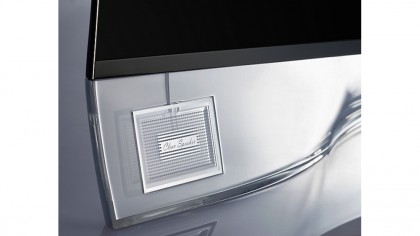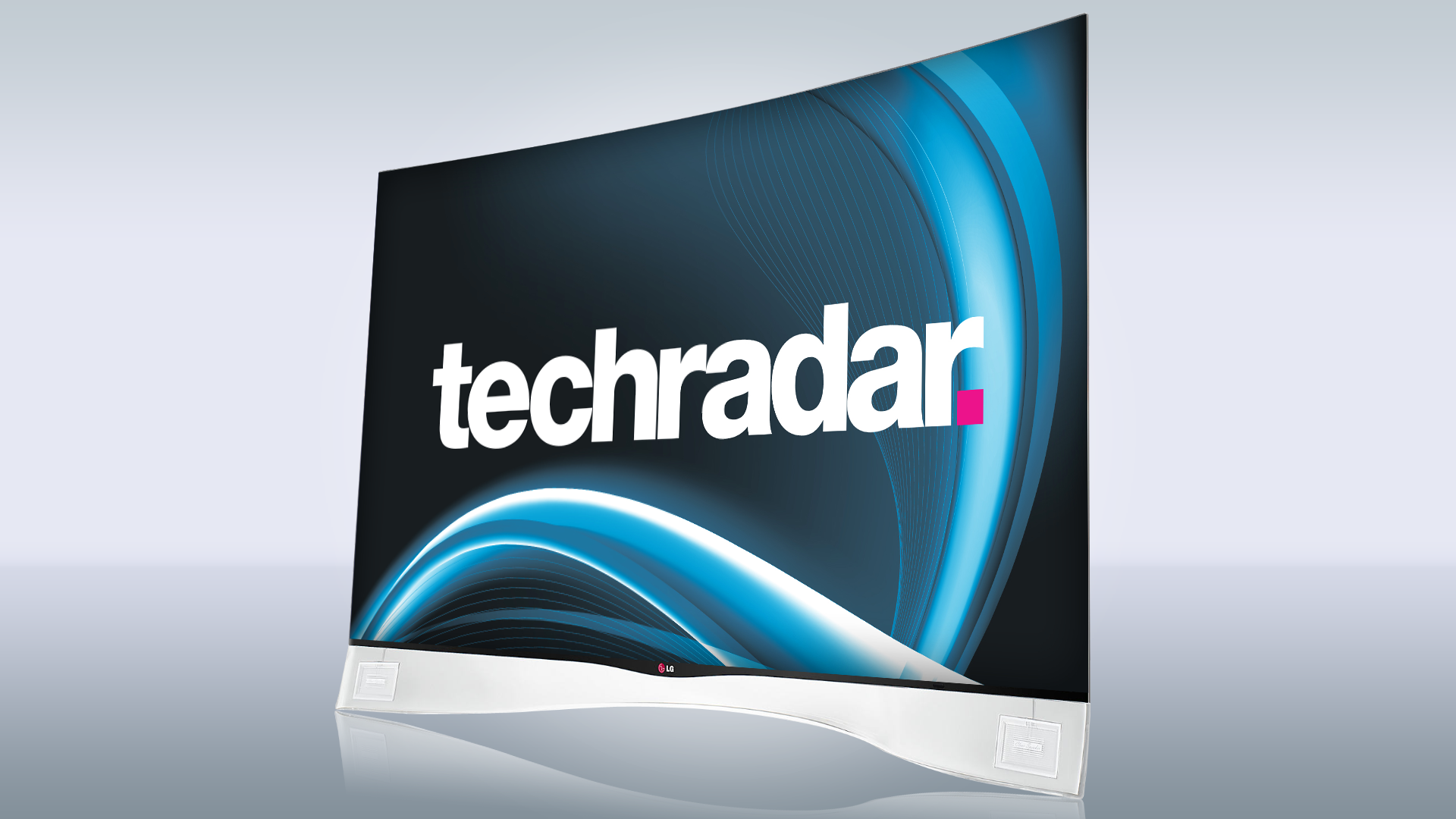TechRadar Verdict
Although the curve contributes much more to the 55EA9800's sultry design appeal than it does its performance, nor does it detract substantially from the genuinely astonishing quality of the OLED panel's pictures, which are just 4K resolution away from perfection.
Pros
- +
Remarkable contrast-rich pictures
- +
Stunning design
- +
Unexpectedly good audio
- +
Content-rich smart system
Cons
- -
The curve is divisive
- -
It's relatively expensive
- -
Missing some catch-up TV
- -
It's not 4K
Why you can trust TechRadar
I was frankly starting to doubt that this day would ever come.
I've been shown big-screen OLED TVs at press events and technology shows for so long now without ever actually being able to buy one or even get one to test that I'd started to think the whole OLED 'thing' was basically just pie in the sky.
An AV dream that was never going ultimately going to turn into a hard, commercial reality.
But amazingly OLED TV is finally, properly here. There's a 55-inch set, the LG 55EA9800, sat on our test benches right now.
And not only can you genuinely buy it, but at its current $7,999 price point it's actually a good few grand more affordable than we'd originally expected OLED would be – notwithstanding the fact, of course, that eight grand is hardly bargain bucket stuff when considered against the prices of other normal LED and plasma 55-inch TVs.
OLED glory
Following up on previous OLED demo units, the 55EA9800 uses its OLED tech to deliver a jaw-droppingly svelte body just a couple of millimetres deep over a large quantity of its rear, and a viewing angle well beyond that of normal LED displays.
Plus it will also hopefully live up to all those countless demos I mentioned and deliver truly next-generation picture quality. Despite the fact that it's not a 4K screen (much more on this later).
Sign up for breaking news, reviews, opinion, top tech deals, and more.
Having failed to this point to be persuaded that the new trend for curving TVs is something worth pursuing, though, we're slightly perturbed to see that the 55EA9800 ports a gently curved design. Hopefully this won't distract too much from the 55EA9800's OLED potential.
Actually, even to this confirmed 'curve sceptic', the 55EA9800's curve has a couple of undeniable immediate benefits up its sleeve. First the curve undoubtedly adds to the set's design appeal. Second it allows the 55EA9800 to support its own weight perfectly stably using just a slim curved transparent stand that merely underlines the set's abundant, actually quite revolutionary attractiveness.

As if the 55EA9800's design wasn't already amazing enough, that transparent 'base' section also contains speakers. See-through speakers.
And before you start thinking to yourself that LG's been at the whisky again, the set's rated at a substantial 40W for audio power – a figure well beyond that enjoyed by most flat TVs. Even those substantially chunkier round the back than the 55EA9800.
Of course, stunning though the 55EA9800, the ability to produce a mind-bendingly slim screen is far from OLED's only trick. For fans of picture quality a far more important OLED benefit is the way the pixels in OLED panels each produce their own light.
Amazing contrast
This means that unlike LCD (but rather like plasma) the OLED picture doesn't inevitably end up as a compromise between an image's dark and light extremities, but is able to express the full dynamic range of a source.
Or to put it all more straightforwardly, OLED is capable of producing simply sensational contrast and black level response.
Its self-emissive nature also should help it join plasma in delivering much crisper motion, as there should be minimal response time delay, as well as providing a much wider realistic viewing angle.
In other words, the videophile in me has a heck of a lot to get excited about where the 55EA9800 is concerned. So it's a shame this excitement has a little of the edge taken off it by the fact that a) it's not 4K and b) it's curved.
The former of these issues wouldn't actually be classed as an issue on LG's debut OLED TV if the technology had rolled out a year or two ago, as I'd hoped it was going to. And it's not really fair to expect the very first commercially available OLED TV to support a native 4K pixel count - especially at a price of $8K. But at the same time I can't help the fact that I'm already falling head over heels in love with 4K.

The curve, meanwhile, raises objections based around the grounds that logic would dictate that curving a screen means you need to sit in just the right spot if you want the curve to potentially benefit rather than harm the viewing experience.
Surely if you're not sat in this 'sweet spot', you'd think, the image's geometry will be distractingly 'off'. Plus there's a sense that brands are starting to curve screens just because they can, rather than because doing so takes the picture quality debate forward.
Curved objections
LG, not surprisingly, has a few arguments marshalled in favour of the screen's curved approach. It reckons the curve follows the natural curve of your eye, making images look crisper right into the corners and creating a more immersive field of view that seems to wrap slightly around you.
It's even argued that curving a screen actually increases its viewing angle as light is more focussed towards the viewer – though this doesn't really stack up where OLED is concerned, since OLED is itself so beneficial to viewing angles that it doesn't need further assistance from the curve.
Experience of commercial cinemas provides ample proof that curving a screen can be beneficial to really massive screens. But a 55-inch TV?! Hmm.
The 55EA9800 is 3D capable as we'd expect of a modern high-end TV, and just as inevitably uses LG's own passive 3D technique.
There's also a full version of LG's picture menus, complete with ISF-certified calibration menus including colour, gamma and white balance management tools. Plus, of course, the 55EA9800 sports LG's current smart TV system.
This is one of the most content-rich platforms in town, including a strong suite of the all-important video streaming services that make up the heart of any smart TV service.
There are a few too many pointless smaller apps – C-list games, silly infotainment bits and bobs – cluttering up the interface, but the presentation and organisation is attractive and quite effective, if perhaps a little overwhelming. At least until you get used to it.
Doing its best to make using the TV easier, though, is one of LG's excellent 'magic' remote controls. This rather brilliantly provides point and click technology, where you literally just aim it at the option on the screen you want to select, and a nice, tactile 'fly wheel' for speedily scrolling up and down long menus.
Excellent – so much so that it's no great surprise to find arch rival Samsung 'borrowing' the point and click idea for its 2014 TVs.

John has been writing about home entertainment technology for more than two decades - an especially impressive feat considering he still claims to only be 35 years old (yeah, right). In that time he’s reviewed hundreds if not thousands of TVs, projectors and speakers, and spent frankly far too long sitting by himself in a dark room.
